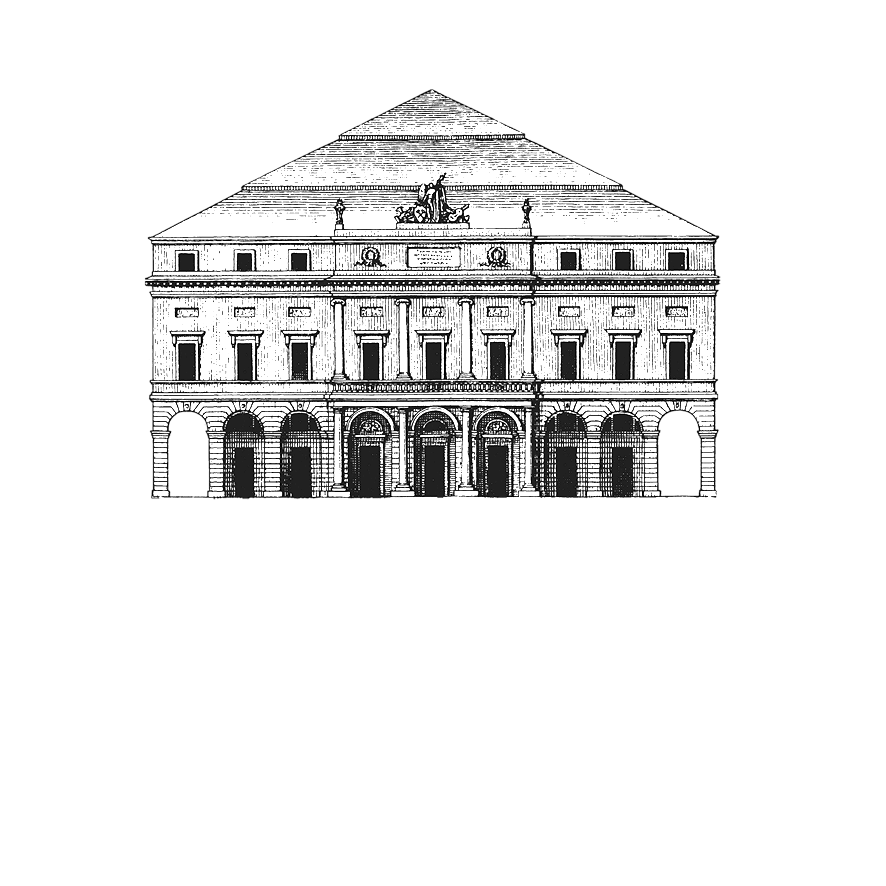Teatro Comunale Pavarotti-Freni
Characteristics of the theatre, rental installations and production of new installations
The Opera House is one of the most active and prestigious Italian Traditional Theaters for the construction and design of scenery. It is possible to rent existing sets or even commission the production of ad hoc stage sets.
For information
segreteria@teatrocomunalemodena.it
info@itineragate.it
Rental Sets
Detailed list of sets of Modena Opera available for rental to third parties, in Italy and abroad.
Repertory works
Contemporary works
New installations
In the tradition of Italian opera houses, its productive capability is a real cultural asset. The wooden parts and the painted canvases of the new installations are built directly in the set design workshops within the Opera House by its team of set designers and artisans. In order to support this tradition and, thanks to its internationally recognized expertise, the Opera designs and constructs ad hoc sets for opera productions in Italy and abroad. Important recent opera productions made for its and other theaters are: La Gioconda (2018, Fondazione Teatri di Piacenza), Lucia di Lammermoor (2017 New National Theatre Tokyo in co-production with the Opéra of Monte Carlo), The Marriage of Figaro (2015 Auditorium of Tenerife and the Teatro Comunale di Bologna), Don Pasquale (Centre Lyrique Clermont Auvergne in co-production with Opéra Grand Avignon, Fondation Pergolesi Spontini, Opéra Théâtre de Limoges, Opéra de Massy, Opéra de Reims, Opéra de Rouen Haute-Normandie, Opéra Théâtre de Saint-Étienne, Opéra de Vichy), Cinderella (2015 Opéra de Lausanne), Pushkin’s Fairy Tales (2015, directed by Bob Wilson Teatro delle Nazione, Moscow), Veremonda, l’Amazzone di Aragona by Francesco Cavalli (2015 Spoleto Festival USA Charleston).
The Set Design Laboratory
The Set Design Laboratory of the Opera House is a rare example of an ancient theater hall of scenography still carrying out its original functions. During the nineteenth century, operas utilised these spaces for intense artistic activity, carried out by skilled set artists, mostly linked to their own productions. During the twentieth century, as a result of technical developments in the field of scenography, these places were progressively let go. In the nineteenth century the sets were painted, but already at the end of the century, due to the introduction of gas lighting first and electric lighting afterwards, prebuilt three-dimensional sets were preferred.
Laboratories inside the operas were generally situated in the attics, inhibiting the space to construct this type of installation, which often rose up vertically.
Fortunately, in Modena the set design area has survived this fate and remains an integral part of the Opera House. Thanks to Koki Fregni, the area has been restored to its former artistic glory, and is now the seat of a full-blown school of set design. From that moment on the area has been a breeding ground for remarkable works and it is now the artist Rinaldo Rinaldi who guarantees its creative survival.
Rinaldo Rinaldi’s ongoing contribution, along with that of Maria Grazia Cervetti and Keiko Shiraishi, is a tangible sign both of conservation and renewal in an artistic and artisanal field, bolstering an important profession often ignored by the public and critics. Amidst the celebrated walls of the Modena Opera House, Rinaldi safeguards two important cultural traditions: he guarantees the survival of the artisanal set designer, an ancient art of which only a few representatives remain today, and he keeps the historical set design space of the Modena Opera productive, a space which in most operas has all but disappeared.

